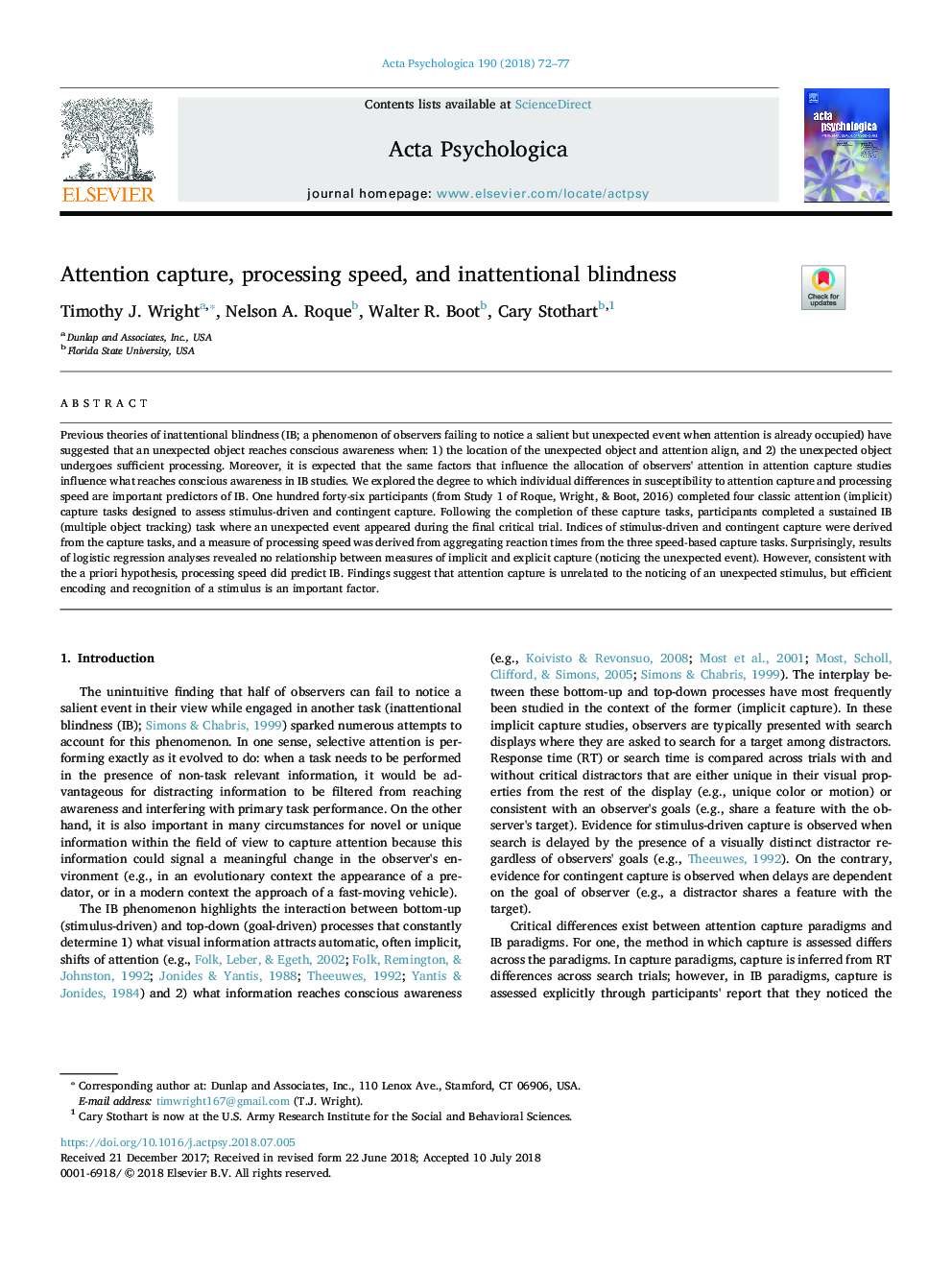| Article ID | Journal | Published Year | Pages | File Type |
|---|---|---|---|---|
| 7276480 | Acta Psychologica | 2018 | 6 Pages |
Abstract
Previous theories of inattentional blindness (IB; a phenomenon of observers failing to notice a salient but unexpected event when attention is already occupied) have suggested that an unexpected object reaches conscious awareness when: 1) the location of the unexpected object and attention align, and 2) the unexpected object undergoes sufficient processing. Moreover, it is expected that the same factors that influence the allocation of observers' attention in attention capture studies influence what reaches conscious awareness in IB studies. We explored the degree to which individual differences in susceptibility to attention capture and processing speed are important predictors of IB. One hundred forty-six participants (from Study 1 of Roque, Wright, & Boot, 2016) completed four classic attention (implicit) capture tasks designed to assess stimulus-driven and contingent capture. Following the completion of these capture tasks, participants completed a sustained IB (multiple object tracking) task where an unexpected event appeared during the final critical trial. Indices of stimulus-driven and contingent capture were derived from the capture tasks, and a measure of processing speed was derived from aggregating reaction times from the three speed-based capture tasks. Surprisingly, results of logistic regression analyses revealed no relationship between measures of implicit and explicit capture (noticing the unexpected event). However, consistent with the a priori hypothesis, processing speed did predict IB. Findings suggest that attention capture is unrelated to the noticing of an unexpected stimulus, but efficient encoding and recognition of a stimulus is an important factor.
Related Topics
Life Sciences
Neuroscience
Cognitive Neuroscience
Authors
Timothy J. Wright, Nelson A. Roque, Walter R. Boot, Cary Stothart,
